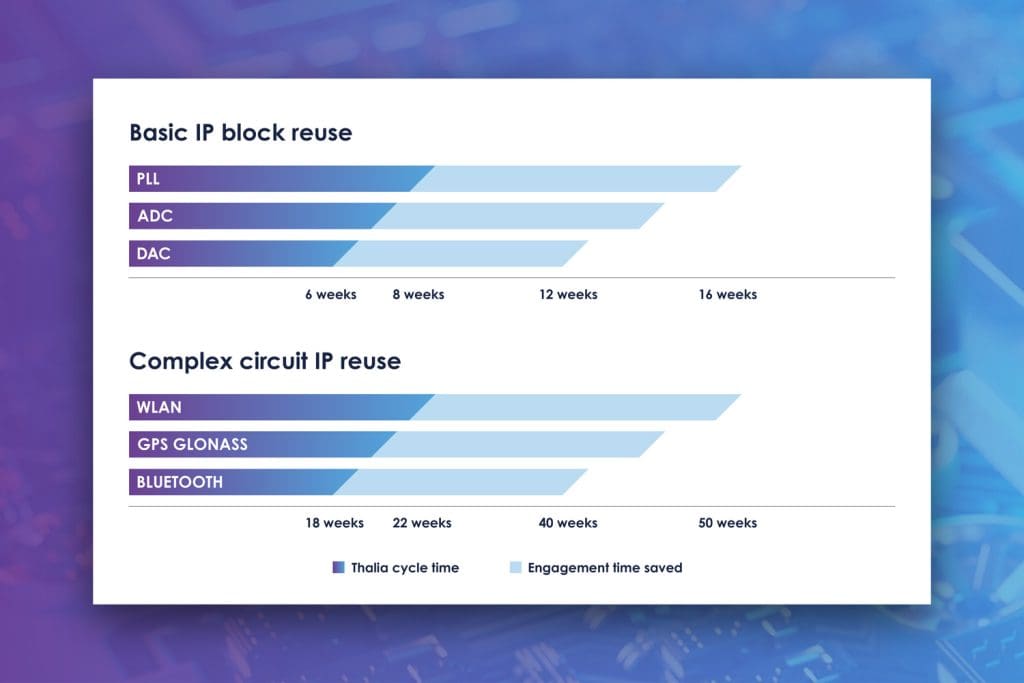Industry Expert Blogs

|
Navigating the challenges of manual IP design migrationsAwadh Pandhey - ThaliaMar 22, 2024 |
In semiconductor design, the migration of IP across different technology nodes is a complex but business critical process. This task, traditionally manual, involves a detailed analysis of source and target technologies, migration of schematics and testbenches, and iterative design adjustments to meet specific performance requirements for the final design layout.
The challenges of manual migration
The manual process is intricate and lengthy, taking weeks to months, depending on the complexity of the circuit and IPs involved. Designers must deeply understand circuit behavior across Process, Voltage, and Temperature (PVT) corners, and engage in extensive simulations and iterations to achieve the desired specifications.
Additionally, the rate at which new technology nodes are introduced is accelerating, with each new node introducing more design rule complexity, leading to higher development costs and greater pressure on engineering resources due to the additional time needed to manage the migration process.
A shortage of skilled engineers further complicates the situation, not only extending design timelines and inflating costs due to the premium on expert talent, but also putting companies at risk of falling behind in the fiercely competitive race to secure fab capacity.
Using automation to maximise resources
However, the landscape is evolving, and there is now a range of tools and software solutions on the market designed to tackle these challenges. A key feature to look out for when considering these tools is the use of automation to reduce manual intervention, streamline the migration of designs to new nodes, and optimize designs to save time and cost thus providing a clear advantage over manual processes.
In response to these challenges, Thalia's AMALIA platform emerges as a prime example, leveraging AI and ML in its suite of tools for advanced analog design, particularly within the PMIC/RFIC domain.

Engagement time saved using AMALIA platform versus manual migration approach.
How AMALIA addresses the gaps in the traditional IP migration flow
The first tool in the platform is AMALIA 's Technology Analyzer (TA) which automates the initial and time-consuming process of analyzing electrically comparable devices between the source and target Process Design Kits (PDKs) to significantly shorten the time needed for technology assessment and decision-making that would precede any IP migration.
Next, the AMALIA Circuit Porting (CP) tool builds on this analysis, automating the migration of schematics and testbenches with a high level of accuracy and reliability. This step not only maintains the integrity of the original design but also drastically reduces the time required in manual porting.
If circuit porting alone does not meet all the design constraints, AMALIA Design Enabler (DE) uses AI and machine learning to optimize circuit performance, focusing on critical devices and making targeted adjustments. This results in a design that meets, and often surpasses, the required specifications, significantly reducing iterations and the overall development duration.
Lastly, AMALIA 's Layout Automation (LA) tool ensures that the intelligence gathered during silicon validation is not lost in translation to the final layout. By automating routine tasks and conducting thorough design rule checks, LA maintains the original placement and floorplan, thus upholding the design's integrity and facilitating a smoother transition to manufacture-ready designs.
A strategic advantage
The semiconductor industry's shifting towards automated IP design migration is a response to the increasing complexity and pace of technology development. Thalia's AMALIA platform delivers a comprehensive solution that bridges the gaps in manual design migration flow and offers a unique combination of speed, efficiency, and precision that significantly reduces design cycle time by up to 50%. In turn, associated costs are reduced and time-to-market for new products is faster, offering a strategic advantage to companies looking to stay competitive in a dynamic market.
